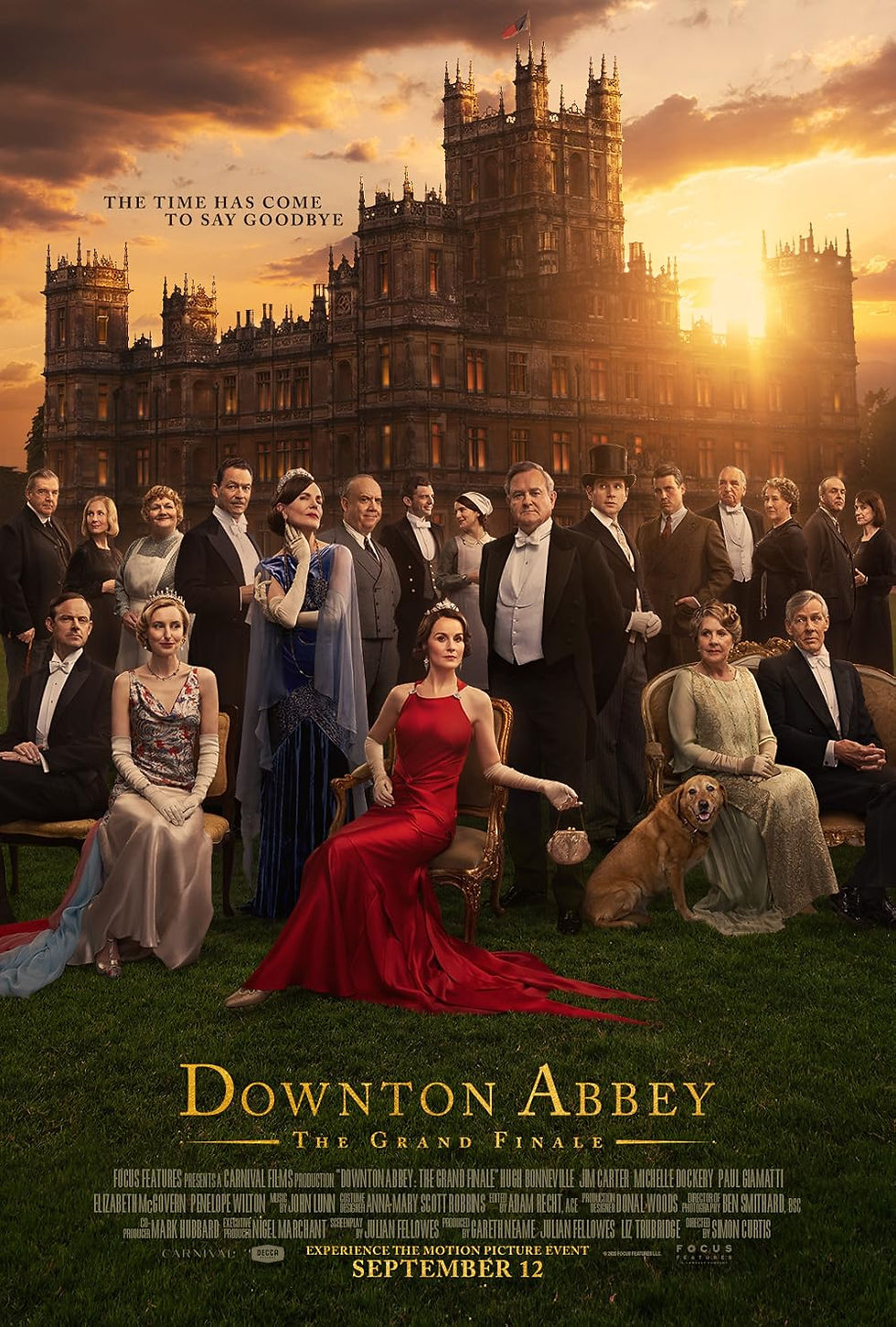Downton Abbey: The Grand Finale
- Young Critic

- Sep 22
- 3 min read
The finale that proves sometimes it’s best to let go

Downton Abbey (2010–2015) was a comfort watch for many during its run, providing the subtle dramas of the English nobility in the 1910s and ’20s. Essentially a remake of Upstairs Downstairs (1971–1975), the series nevertheless had its own stride and signature tone. Creator Julian Fellowes concluded the show after five seasons and moved on to depict Gilded Age American nobility in the aptly titled The Gilded Age (2022–). Yet the success and pull of Downton proved irresistible, leading to a follow-up trilogy of films to wrap up his characters’ stories. The last to arrive is the capstone: Downton Abbey: The Grand Finale (2025).
Downton Abbey: The Grand Finale centers on a scandal in 1930s British high society involving Lady Mary’s (Michelle Dockery) divorce. This unfolds just as Harold (Paul Giamatti), Lady Grantham’s (Elizabeth McGovern) brother living in the States, returns to bring ill tidings about the family’s wealth following the 1929 stock market crash. Alongside Harold is the mysterious companion Gus Sambrook (Alessandro Nivola). Meanwhile, Lord Grantham (Hugh Bonneville) finds it increasingly hard to confront the fact that the world is modernizing rapidly around him, and that he may need to step aside as head of the household in favor of the now-controversial Mary.
This film, just as the second in this unexpected trilogy, is directed by the competent Simon Curtis. Yet as with all of Downton Abbey, this is Fellowes’ film and story through and through. Curtis frames and edits with the steady, professional hand we’ve come to know from him, serving the story and characters over distractions—as he did in My Week with Marilyn (2011) or Woman in Gold (2015). But in Fellowes’ transition from TV to film, he continues to struggle.
Although he started out in film—his screenplay for Gosford Park (2001) remains a career high—Fellowes has become comfortable with the time and space that television provides for developing characters and side plots. In the Downtonfilms, he is constrained by the tight runtime yet stuffS in a season’s worth of subplots for every ensemble member. The results are mixed: there’s more intrigue in Lady Mary’s divorce storyline than in the drama of a committee planning a town fair, which surprisingly becomes one of the film’s most prominent threads. Culling seems to have gone by the wayside, yet the runtime isn’t adjusted accordingly. At two hours, arcs feel rushed, beats pile up, and the core story get crowded out.
Much of Downton Abbey: The Grand Finale feels like a speedrun of consequential story beats mixed with trivial filler material. The result is a watered-down version of the world and its characters, more like an inconsequential fan film than a true “grand finale.” Sure, by the end there’s a significant shift in the world of Downton, but it doesn’t feel fully earned or built up through the previous films. Perhaps that’s because there’s simply less interest in these characters and this world. Fellowes and his cast have stretched the story far past the public’s curiosity. Even the actors themselves seem to be coasting, happy at the reunion but not building upon their previous work.
In the end, Downton Abbey: The Grand Finale emphasizes the theme of knowing when to let go and move on. One wonders how self-reflective that message is for the saga itself. Fans wanted more after the series ended, but by giving in to that demand, Fellowes and company have watered down the excitement and urgency of the storytelling, delivering increasingly contrived reasons to revisit this world. Nevertheless, even a diluted and rushed patchwork of Fellowes’ writing—paired with Curtis’ competent direction and the ever-charming cast—makes returning to Downton feel like settling down with a warm mug of your favorite tea.
6.5/10








Comments